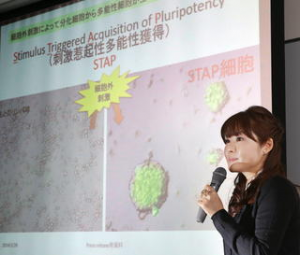 The scientists from Japan behind the potentially revolutionary new stem cell technique are preparing a retraction of their widely hailed paper on producing stem cells after they confirmed the research had inappropriate points including apparently false photographic evidence.
The scientists from Japan behind the potentially revolutionary new stem cell technique are preparing a retraction of their widely hailed paper on producing stem cells after they confirmed the research had inappropriate points including apparently false photographic evidence.
Ryoji Noyori, from the Riken science institute and a Nobel laureate, deeply bowed at a press conference and then apologized for what he said was sloppy work by authors of the research, which in January seemed to show a very simple method of making cells that are embryo-like.
His word also were echoed by Haruko Obokata the 30-year old lead author of the paper who was not at the press conference. She also was said to be in poor psychological health. In a statement, she said I am taking the critiques seriously am deeply apologetic for the confusion that was caused.
Stem cell research has enormous potential for treating diseases due to their ability to grow into almost any sort of tissue. However, scientists are just starting to find ways of deriving them without the need of extracting them from human embryos.
Executives at Riken said re-examination of the scientists’ research was ongoing and that thus far they had not found any reason to conclude the claims were not true.
However, Riken director Maki Kawai acknowledged that an initially strong defense of the claims Riken made when it started its investigation last month now seemed to be too optimistic.
Some experts from the outside questioned the completed research however. One regenerative medicine professor said he was not able to create any stem cells by following the acid-bath formula from the paper.
Another expert has pointed out what he called inconsistencies between those procedures that were outlined in the paper and those in the follow-up guidelines issued by the study authors.
Riken also said the photography in the research looked similar to photos of a different experiment that appeared in the doctoral dissertation of Obokata.
